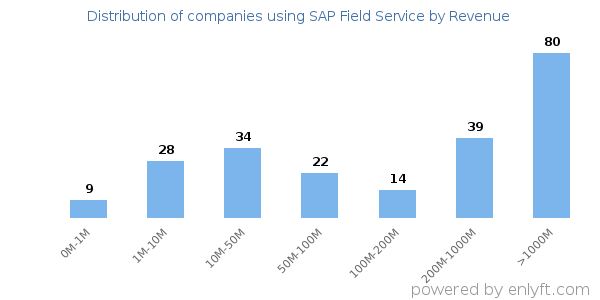Companies using SAP Field Service
We have data on 243 companies that use SAP Field Service. The companies using SAP Field Service are most often found in United States and in the Information Technology and Services industry. SAP Field Service is most often used by companies with >10000 employees and >1000M dollars in revenue. Our data for SAP Field Service usage goes back as far as 8 years and 8 months.
Who uses SAP Field Service?
| Company | SAP SE |
| Website | sap.com |
| Country | United States |
| Revenue | >1000M |
| Company Size | >10000 |
| Company | Accenture PLC |
| Website | accenture.com |
| Country | Ireland |
| Revenue | >1000M |
| Company Size | >10000 |
| Company | Infosys Ltd |
| Website | infosys.com |
| Country | India |
| Revenue | >1000M |
| Company Size | >10000 |
| Company | Ernst & Young Global Limited |
| Website | ey.com |
| Country | United States |
| Revenue | >1000M |
| Company Size | >10000 |
| Company | Insight Enterprises Inc |
| Website | insight.com |
| Country | United States |
| Revenue | >1000M |
| Company Size | >10000 |
| Company | Website | Country | Revenue | Company Size |
|---|---|---|---|---|
| SAP SE | sap.com | United States | >1000M | >10000 |
| Accenture PLC | accenture.com | Ireland | >1000M | >10000 |
| Infosys Ltd | infosys.com | India | >1000M | >10000 |
| Ernst & Young Global Limited | ey.com | United States | >1000M | >10000 |
| Insight Enterprises Inc | insight.com | United States | >1000M | >10000 |
Target SAP Field Service customers to accomplish your sales and marketing goals.
SAP Field Service Market Share and Competitors in Customer Service Management
We use the best indexing techniques combined with advanced data science to monitor the market share of over 15,000 technology products, including Customer Service Management. By scanning billions of public documents, we are able to collect deep insights on every company, with over 100 data fields per company at an average. In the Customer Service Management category, SAP Field Service has a market share of about 0.1%. Other major and competing products in this category include:
Customer Service Management
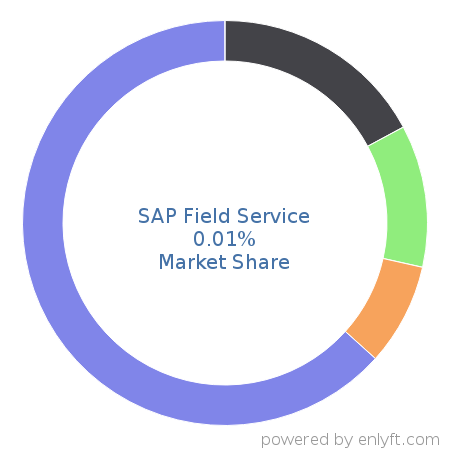

What is SAP Field Service?
SAP Field Service enable and manage comprehensive field service processes, including call taking, service order planning, resource scheduling, on-site service execution, and billing.
Top Industries that use SAP Field Service
Looking at SAP Field Service customers by industry, we find that Information Technology and Services (26%), Machinery (7%) and Computer Software (5%) are the largest segments.
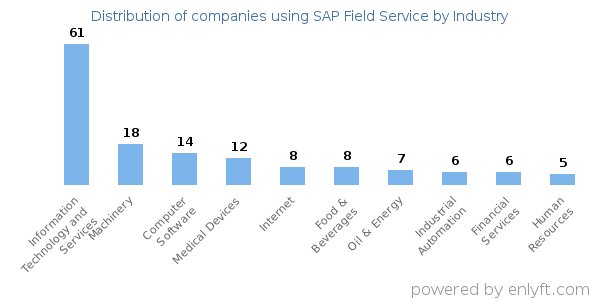
Top Countries that use SAP Field Service
39% of SAP Field Service customers are in United States and 13% are in Germany.
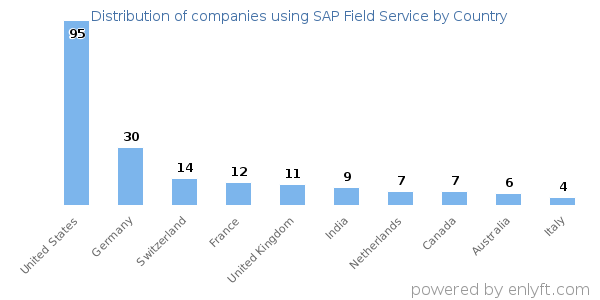
Distribution of companies that use SAP Field Service based on company size (Employees)
Of all the customers that are using SAP Field Service, 16% are small (<50 employees), 33% are medium-sized and 48% are large (>1000 employees).
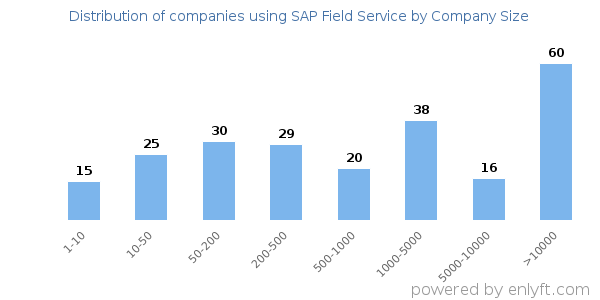
Distribution of companies that use SAP Field Service based on company size (Revenue)
Of all the customers that are using SAP Field Service, a majority (51%) are large (>$1000M), 29% are small (<$50M) and 15% are medium-sized.
